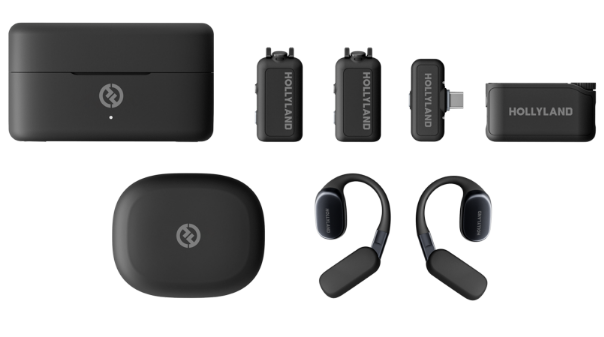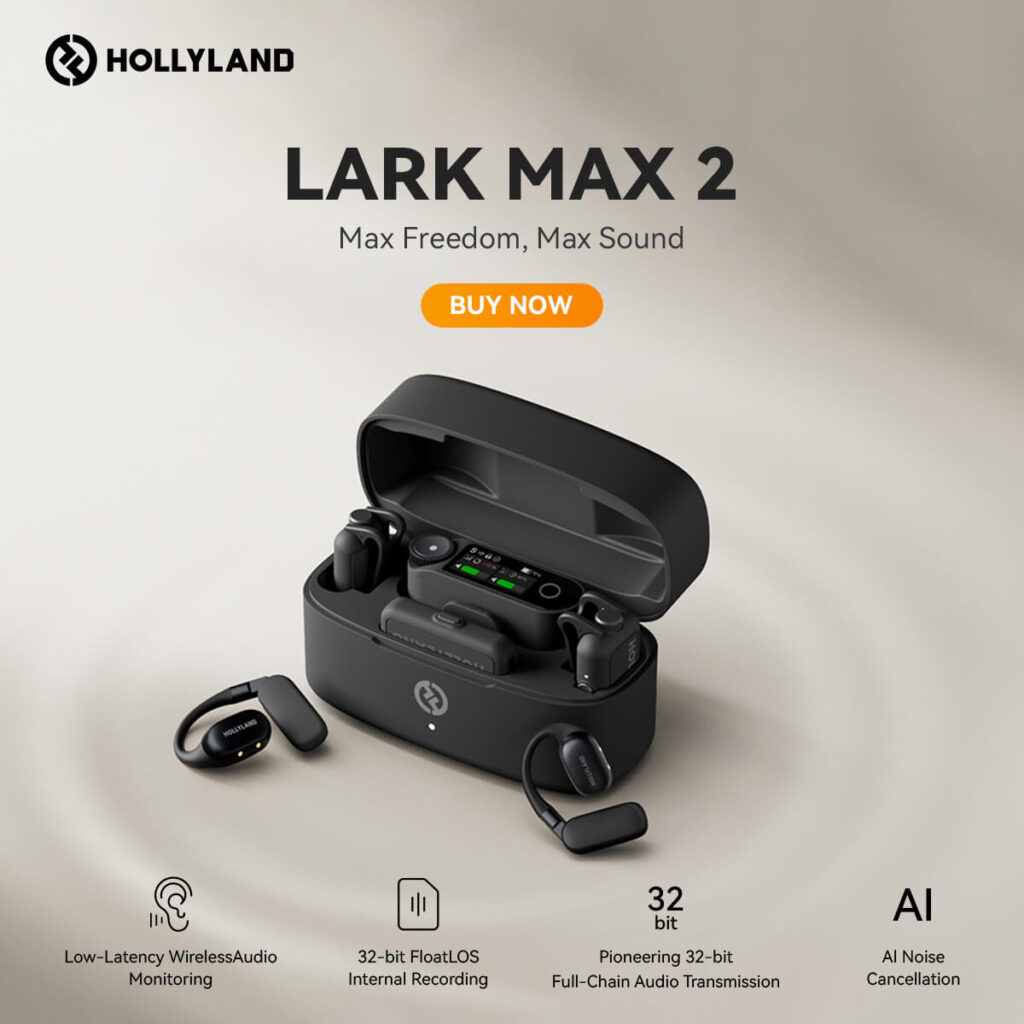Are you ready to elevate your singing recordings with crystal-clear quality? Whether you’re a budding musician, a content creator, or just love to belt out tunes, the right microphone can make all the difference. With the overwhelming options available, it might be tricky to find the perfect match for your vocal range and recording setup. Fret not—we’ve hit every note in the search for the best computer microphones tailored for singing, so you don’t have to. From the robust and professional to the sleek and budget-friendly, our top picks are tuned to ensure your voice hits the high notes in every performance.
When selecting the best computer microphone for singing, there are five key criteria to consider:
- Sound Quality: The most crucial factor is how well the microphone captures and reproduces the clarity, depth, and nuances of the vocals. Look for a wide frequency response and a high signal-to-noise ratio.
- Polar Patterns: This refers to the shape of the area that a microphone ‘listens’ to sound from. For singing, a cardioid pattern is often preferred as it captures sound from the front and minimizes background noise.
- Durability and Build Quality: Singers need a robust microphone that can handle use in various environments, whether in a home studio or on the go.
- Ease of Use: You want a plug-and-play experience, with minimal setup fuss. Also, consider the compatibility with different operating systems and recording software.
- Additional Features: Look for bonus features such as built-in pop filters or shock mounts, which can enhance recording quality. Also, consider whether the microphone offers USB connectivity for easy integration with computers.
These criteria ensure that you get a microphone that not only delivers exceptional audio performance but is also user-friendly and well-suited for a singer’s needs. Now, let’s explore some of the top contenders in the market.
| Product Name | Price (approx.) | Type | Polar Pattern | Frequency Response | Sensitivity | Max SPL | Additional Features |
|---|---|---|---|---|---|---|---|
| Audio-Technica AT2020USB+ | $149 | Condenser USB | Cardioid | 20Hz – 20kHz | – | 144 dB SPL | Built-in headphone jack, mix control |
| Shure SM58 | $99 | Dynamic | Cardioid | 50Hz – 15kHz | -54.5 dBV/Pa (1.85 mV) | – | Durable, ideal for live performance |
| Rode NT1-A | $229 | Condenser XLR | Cardioid | 20Hz – 20kHz | -31.9 dBV/Pa | 137 dB | Low self-noise, comes with shock mount |
| Blue Yeti USB Microphone | $129 | Condenser USB | Multiple | 20Hz – 20kHz | 4.5mV/Pa | 120 dB (THX) | Built-in gain control, mute button, zero-latency headphone output |
| Neumann TLM 102 | $699 | Condenser XLR | Cardioid | 20Hz – 20kHz | – | 144 dB SPL | Compact, high sound pressure handling |
Some microphones are USB microphones (which can be plugged directly into a computer), while others are XLR microphones (which require an audio interface or mixer). This might be an important consideration based on what additional equipment you own or plan to purchase.
Audio-Technica AT2020USB+
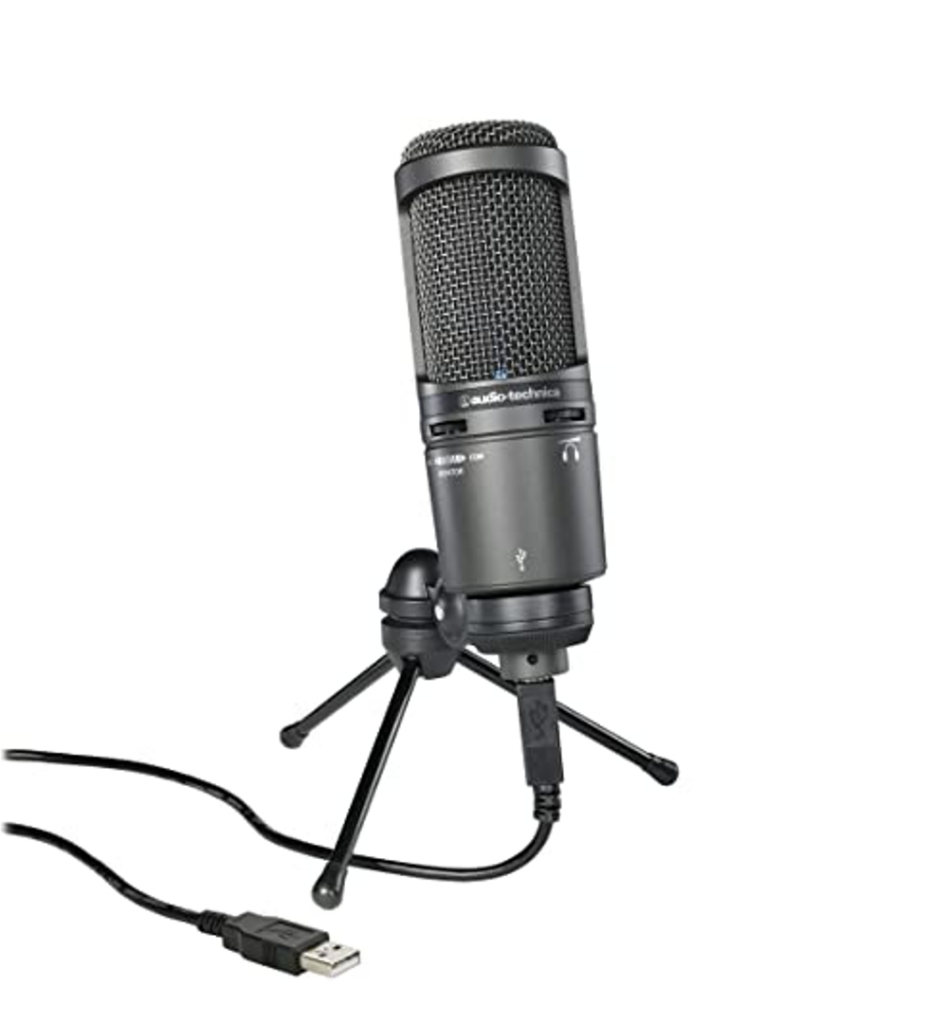
Overview:
The Audio-Technica AT2020USB+ is a versatile and easy-to-use microphone that is well-suited for singers looking to capture high-quality audio without the hassle of an audio interface. Its plug-and-play functionality with computers makes it a great option for those who value simplicity and portability.
From my experience, the AT2020USB+ impresses with its clear and natural sound capture. The cardioid pickup pattern is effective at isolating the vocals from background noise, which is particularly useful for home studios that may not have professional sound insulation.
The additional features, such as the built-in headphone jack with volume control for real-time monitoring, are quite handy. This means singers can hear themselves without any latency, which is the delay between singing into the mic and hearing it through the headphones.
Specs:
- Microphone Type: Condenser
- Polar Pattern: Cardioid
- Frequency Response: 20Hz – 20kHz
- Sample Rate: 44.1/48 kHz
- Bit Depth: 16 bit
- Connection Type: USB
- Additional Features: Mix control, Headphone jack with volume control
- Included Accessories: Pivoting stand mount, Tripod desk stand, Protective pouch, USB cable
Pros & Cons:
Pros:
- Remarkable sound quality for its class, capturing detailed highs and solid mids that are flattering for most vocal tones.
- Direct USB connection simplifies the setup process, negating the need for extra gear.
- Real-time audio monitoring is a big plus for achieving the best vocal performance.
Cons:
- The microphone’s 16-bit depth may not be adequate for professional recordings that require higher resolution audio.
- It lacks multiple pickup patterns, which could be a disadvantage when trying to use it in different recording scenarios.
- The AT2020USB+ is sensitive to plosives and requires a pop filter for optimal performance.
Price:
The AT2020USB+ sits in the mid-range price bracket, often found around $149-$199, which I find reasonable considering its features and audio quality. It’s not the cheapest option available, but for those serious about their craft, it’s a worthwhile investment. Keep in mind that prices can fluctuate based on sales and retailer discounts.
In conclusion, the Audio-Technica AT2020USB+ is a solid contender in the computer microphone market for singers. Its ease of use, coupled with great sound quality, makes it a practical choice for those looking to improve their home studio setup or for artists who frequently engage in online performances or recordings. Despite its minor weaknesses, it offers a lot of value for its price point.
Certainly! Based on your request, I will provide a detailed listicle-style review of the Shure SM58 microphone.
Shure SM58
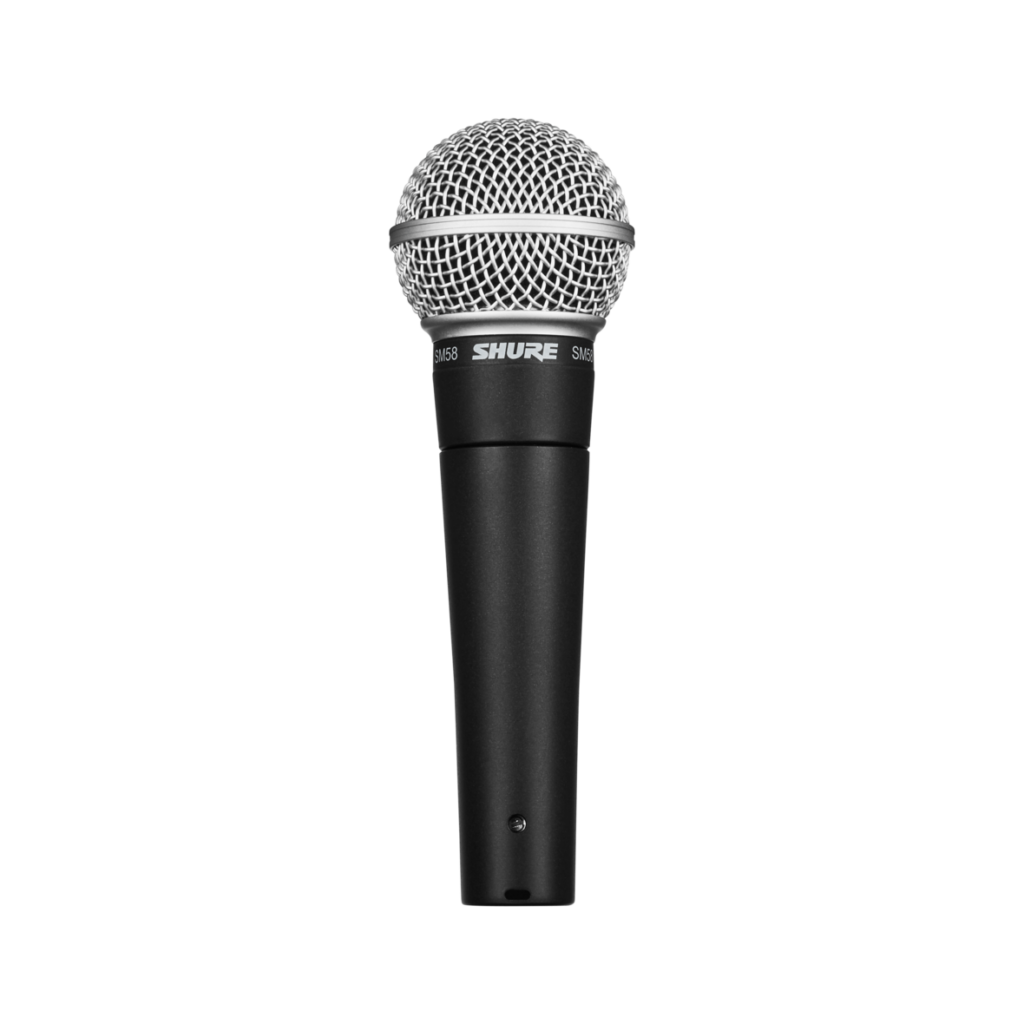
Overview:
The Shure SM58 is akin to a Swiss army knife in the world of vocal microphones—reliable, versatile, and nearly indestructible. Designed initially for vocalists, its tailored frequency response and the built-in spherical filter make it a fantastic choice for singers who need a mic that can withstand rigorous use while delivering consistently clear and warm vocal reproduction.
In my hands-on experience, the SM58 has proven to be a stalwart companion. It does an outstanding job of focusing on the main sound source, thanks to its cardioid pickup pattern, which rejects background noise. While it’s not the latest tech marvel in microphones, its longevity in the market is a testimony to its unmatched quality and performance.
Specs:
- Type: Dynamic
- Polar Pattern: Cardioid (unidirectional)
- Frequency Response: 50 to 15,000 Hz
- Output Impedance: 150 ohms
- Connector: Three-pin professional audio XLR
- Weight: 298 grams (10.5 oz)
Pros & Cons:
Pros:
- The durability of this microphone is simply legendary. It’s been dropped, tossed, and tested in the toughest of live performances and still comes out singing, which is incredibly reassuring.
- Sound wise, it offers a clear and present sound signature with a subtle emphasis on the mids, which brings out vocal clarity.
- Feedback rejection is one of its strong suits, making it perfect for live singing where monitors and other sound sources are usually in close proximity.
- Its simplicity – no batteries or phantom power required – means it’s really plug-and-play, perfect for those who want uncomplicated setups.
Cons:
- If you’re after studio-grade, crystal-clear, detailed recordings, you might find the SM58 a bit lacking compared to condenser mics that are tailored for studio recording.
- It does lack the frills of USB connectivity or onboard controls found on newer microphone models, so if you’re looking for something with more tech, this might feel a bit retrograde.
- The included carrying pouch is functional, but a hard case would better complement the durability of the mic.
Price:
While prices vary depending on the retailer, the Shure SM58 usually ranges between $90 – $100. It’s a price that screams value considering the microphone’s performance and robustness.
In summary, the Shure SM58 is not just a microphone; it’s an industry stalwart. It grants peace of mind to the singer that what goes in, comes out with quality, minus the unwanted noises, and it just keeps going. I believe its no-nonsense design, performance, and robustness justify every penny of its asking price, and I wholeheartedly recommend it to any singer who wants a reliable workhorse by their side.
Rode NT1-A
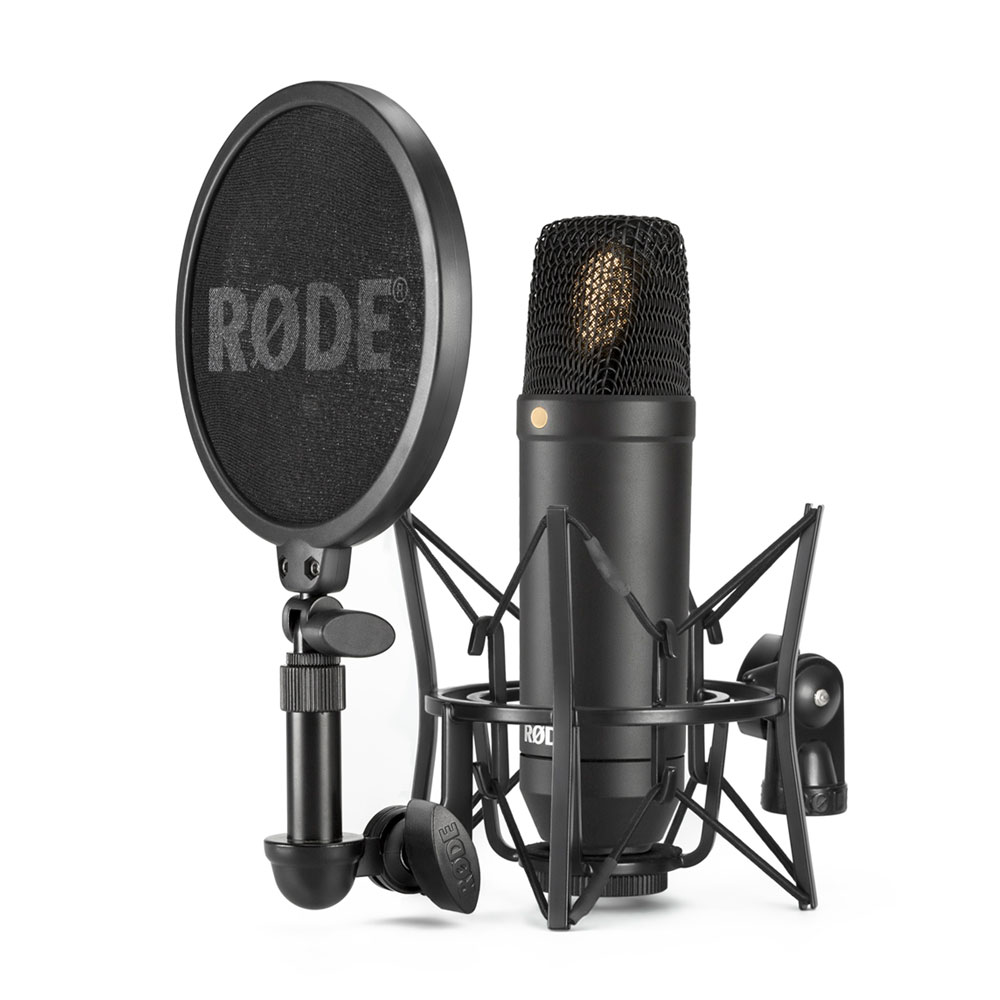
Overview
The Rode NT1-A cardioid condenser microphone has cemented itself as a leading tool in the home recording and studio environments, particularly for those who focus a lot on singing. The device is hailed for its clarity and warmth of sound, which is an essential factor when capturing vocal performances. Having spent time with the NT1-A, the first thing I noticed was its almost uncanny ability to deliver a polished, pro-studio sound straight out of the box, something that can be a godsend for singers looking to produce clean, radio-ready recordings at home.
Its build, resembling that of far more expensive studio microphones, adds a touch of professionalism to any setup. Moreover, it’s astoundingly quiet – Rode claims it’s the world’s quietest studio microphone – which means it picks up even the subtle nuances in a vocal performance without any unwanted noise.
Specs
- Acoustic Principle: Pressure Gradient
- Active Electronics: JFET impedance converter with bipolar output buffer
- Capsule: 1″
- Polar Pattern: Cardioid
- Frequency Range: 20Hz – 20kHz
Blue Yeti USB Microphone
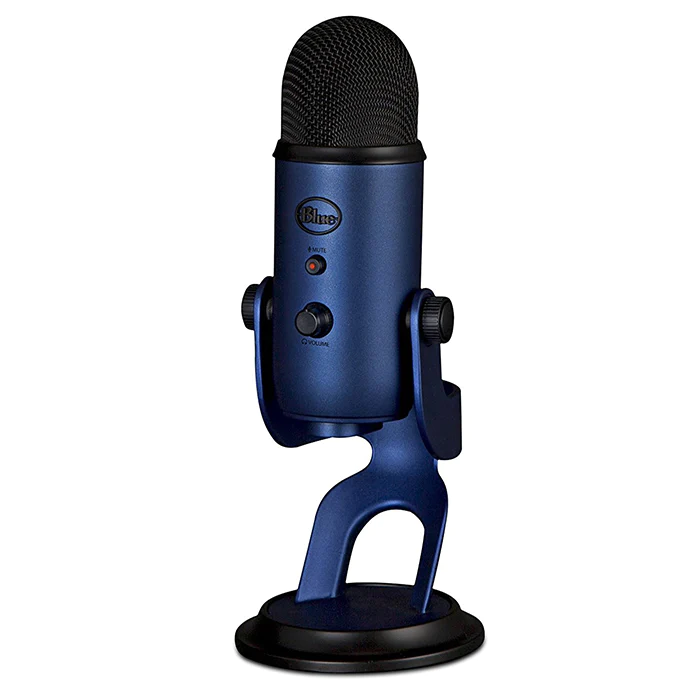
Overview:
The Blue Yeti USB microphone is a fan favorite for budding musicians, podcasters, and, yes, singers. It’s a versatile plug-and-play mic that marries simplicity with a rich audio capture. In my hands-on experience with the Yeti, I’ve found it exceptional for its ease of use without compromising on quality.
From the get-go, the Yeti’s multipattern selection feature is a lifesaver. Whether recording powerful vocals or softer harmonies, its four pattern settings—cardioid, bidirectional, omnidirectional, and stereo—offer a level of flexibility rarely seen in USB microphones at this price range. Aiding this is the convenience of onboard controls for volume, pattern selection, instant mute, and microphone gain—allowing you to adjust on the fly.
The sound quality produced by the Yeti during singing sessions is commendable. It’s able to capture the full range of vocal dynamics, from the subtle breaths to the bold high notes, with a clarity that doesn’t fail to impress even the more discerning ear. Moreover, its sturdy build is reassuring, suggesting it’s a long-term companion for your vocal recording endeavors.
Specs:
- Transducer Type: Condenser, Pressure Gradient With USB digital output
- Polar Patterns: Cardioid, Bidirectional, Omnidirectional, Stereo
- Frequency Response: 20Hz – 20kHz
- Bit Rate: 16-bit
- Sample Rate: 48kHz
- Weight: 1.2 kg (2.2 lbs)
Pros:
- User-friendly with plug-and-play capability makes it great for those who are less tech-savvy.
- Offers exceptional versatility with multiple pattern settings, fitting a variety of recording situations.
- Onboard controls for pattern selection, volume, mute, and gain are incredibly convenient.
- Produces clear and professional-quality audio suitable for a variety of vocal types.
Cons:
- While the bulk adds to its durability, it’s not the most portable option for those on the move.
- The 16-bit rate might not satisfy the demand of a professional studio but suffices for home use.
Price:
The Blue Yeti USB microphone hits the sweet spot between affordability and quality, typically retailing around $130-$150. It’s an investment that’s well justified for the features and reliability it comes packed with.
My Opinion:
In my honest opinion, the Blue Yeti USB microphone stands out in its category, especially for singing at home or in a project studio. The sound quality it offers is rich and detailed, making it sound like a more expensive microphone. This is a microphone that doesn’t scare away beginners with technical setup hurdles, and at the same time, it doesn’t disappoint enthusiasts looking to produce studio-like recordings. Its robust build, combined with the ease of use, makes it a top contender for anyone looking to elevate their singing without breaking the bank or wrangling with complicated setups.
Neumann TLM 102
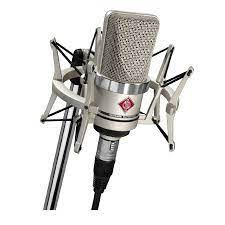
Overview
When it comes to premium studio-grade recording, the Neumann TLM 102 stands out as a powerhouse of clarity and warmth for vocal performances. Intended for those who are serious about their sound, the TLM 102 maintains an enviable position in the market; it’s a piece of equipment that caters to the professional while still being surprisingly accessible.
In my time using the TLM 102, I’ve noticed how it combines technical sophistication with ease of use. Its sleek design is a visual indicator of the quality you can expect. It may look unassuming compared to more ostentatious mics, but its performance quickly steals the spotlight. For singing, especially, the TLM 102 captures the nuance of vocals, providing an uncolored and precise representation that can rival recordings from higher-end models.
Specs
- Acoustic Operating Principle: Pressure gradient transducer
- Polar Pattern: Cardioid
- Frequency Range: 20 Hz – 20 kHz
- Max SPL: 144 dB
- Sensitivity: 11 mV/Pa
- Connectivity: XLR (requires phantom power)
Pros:
- Stellar audio clarity makes vocals stand out with professional finesse.
- Its cardioid pattern effectively minimizes background noise and isolates the singer’s voice.
- Build quality is rugged, reflecting Neumann’s attention to longevity and reliability.
- Aesthetically minimalistic, it’s unobtrusive in any setup.
Cons:
- It lacks onboard controls which may limit immediate ease of use for some users.
- The price point can be a barrier; it’s an investment suitable for those committed to superior audio quality.
Price
The Neumann TLM 102’s price usually hovers around the premium end of the spectrum. Considering its performance and brand heritage, it represents a significant investment for any singer or recording artist.
In my opinion, the Neumann TLM 102’s price is justified by its unparalleled vocal clarity and professional-grade build. It’s a microphone that doesn’t cut corners, and for the serious artist, the expense will likely pay off in the quality of their recordings. It’s an investment in your art, which, to me, seems invaluable.
Conclusion:
In wrapping up, the quest for the best computer microphone for singing will depend on your specific needs, setup, and budget. From high-end studio mics that promise professional quality to budget-friendly options that still deliver impressive clarity, the market offers a diverse range. Remember to consider pattern pickup, durability, and extra features that cater to singing requirements. Regardless of your choice, any of the microphones from our list could elevate your vocal recordings, guaranteeing a crisper, cleaner sound that captures the nuances of your voice. Be sure to pair your selection with the right recording environment and software for the best results.
While traditional computer microphones offer solid quality, singers searching for versatile, convenient recording solutions should also check out wireless lavalier microphones. These compact, reliable mics enable free movement during performances, capturing clear vocals whether you’re recording music covers, live streams, or online tutorials.
Best Seller
Sale
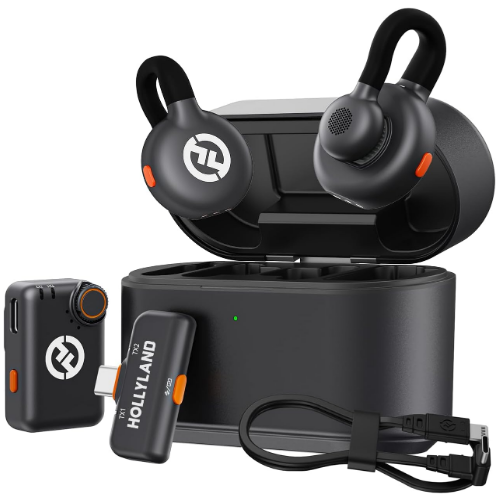
Hollyland LARK M2S – Wireless Clip-on Microphone
- 7g Lightweight, Titanium Clip, Discreet Design
- Clear sound with 24-bit/48kHz, 70dB SNR, 116dB SPL
- Noise Cancellation & 300m Long-Range Stability
- Works with Camera/iPhone/Android/Laptop
- Perfect for Content Creators, Online-Teaching, Streaming
$139
$159
FAQs:
Q1: Do I need a pop filter when recording singing?
A1: Yes, a pop filter is highly recommended for recording singing. It reduces plosives, those pops of air that can distort the sound when pronouncing certain consonants like ‘p’ and ‘b.’
Q2: Is USB or XLR better for a computer microphone for singing?
A2: USB microphones are more convenient and user-friendly, especially for beginners. XLR mics typically offer better sound quality but require an audio interface. Your choice should align with your expertise level and the complexity of your setup.
Q3: How important is the microphone pattern for singing?
A3: The pickup pattern of a microphone is quite important. Cardioid patterns are generally preferred for solo vocals as they focus on the sound in front of the mic and reject background noise. However, other patterns like omnidirectional or bidirectional can be useful depending on the recording situation.






























.png)


